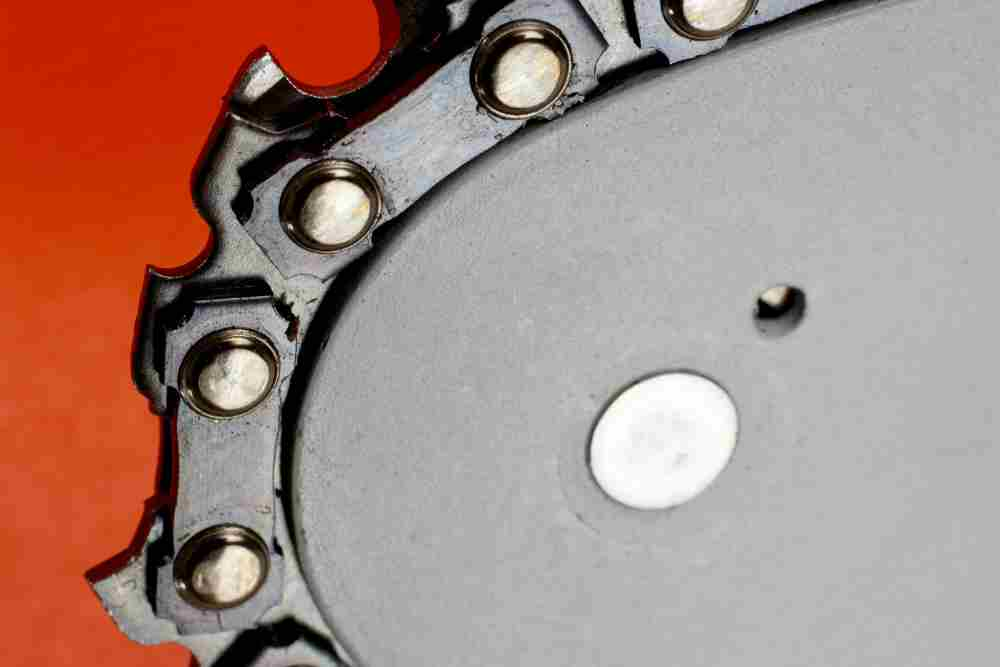When it comes to operating a chainsaw, understanding the direction in which its blade goes is crucial for both safety and efficiency.
Picture this: you’re standing in your backyard, ready to tackle that overgrown tree stump, but suddenly find yourself perplexed by the orientation of the chainsaw blade.
Should it spin clockwise or counterclockwise?
In this article, we will unravel this mystery and provide you with all the essential information on which direction a chainsaw blade goes.

Understanding The Correct Orientation Of A Chainsaw Blade
Understanding the correct orientation of a chainsaw blade is crucial. The blade direction plays a significant role in the chainsaw’s performance.
It affects the efficiency and safety of cutting tasks. Properly installing the blade ensures that it cuts smoothly and reduces the risk of accidents.
There are several factors to consider when determining the blade direction. First, refer to the manufacturer’s instructions and follow their recommendations.
Additionally, take note of the arrow or marking on the blade that indicates the correct installation direction. It is important to align the teeth of the blade in the right direction to ensure effective cutting.
Failing to install the blade properly can lead to binding, kickback, and other dangerous situations.
Therefore, always double-check the blade direction to ensure a smooth and safe operation of the chainsaw.
Chainsaw Blade Anatomy
A chainsaw blade is an essential tool for any woodworker or outdoor enthusiast. Understanding the anatomy of a chainsaw blade can greatly impact its cutting efficiency.
The components of a chainsaw blade include the chain, drive links, cutting teeth, and depth gauges.
These components work together to ensure smooth and accurate cutting. The orientation of the blade also plays a crucial role in its performance. Incorrect blade orientation can lead to inefficiency and even damage to the chainsaw.
Properly aligning the blade ensures that it cuts smoothly and effectively, minimizing the effort required and reducing the risk of kickback.
Identifying Correct Blade Direction
When using a chainsaw, it is crucial to identify the correct blade direction. Manufacturers provide indications to help understand this.
Additionally, you can determine blade direction by examining the chain teeth. Look out for arrows or directional indicators on the chainsaw blade itself.
These indicators will guide you in positioning the blade correctly. Take note of any manufacturer-specific instructions provided in the chainsaw’s manual.
Following these guidelines will ensure that the chainsaw operates smoothly and efficiently during use. By understanding the correct blade direction, you can improve your safety and the effectiveness of your cutting tasks with a chainsaw.
Common Misconceptions
There are several common misconceptions surrounding the direction of a chainsaw blade. Let’s debunk these myths and clarify the facts.
Firstly, it’s important to note that chainsaw blades have a specific rotation direction, determined by the cutting teeth. Contrary to popular belief, chainsaws do not have a “correct” way to install the blade.
Rather, the direction of the blade’s rotation is important. Chainsaw blades should always rotate in a clockwise direction, no matter which way they are placed on the chainsaw.
This ensures optimal cutting performance and safety while using the chainsaw. Remember, it’s the rotation that matters, not the specific orientation of the blade.
The Impact Of Incorrect Blade Direction
Chainsaw blade direction is crucial as it directly impacts safety and efficiency. Incorrect blade direction poses serious hazards and safety concerns.
It compromises the user’s well-being and reduces overall cutting performance. Additionally, it leads to inefficiency and a decrease in productivity.
The repercussions can be severe, causing accidents and damage to the chainsaw itself.
To avoid these risks, users must understand the correct blade direction and take necessary precautions.
Following proper guidelines and using the chainsaw in the right direction ensures optimal performance and minimizes the chances of accidents.
Proper Maintenance And Care
Proper maintenance and care of your chainsaw blade orientation is crucial for ensuring optimal performance and longevity. To keep the blade in the right direction, follow these tips.
- Firstly, regularly examine the markings or arrows indicating correct blade orientation.
- Secondly, ensure that the blade teeth face forward, pointing towards the nose or tip of the chainsaw.
- Thirdly, check for any signs of wear or damage on the blade, and replace it if needed.
- Next, clean and lubricate the blade regularly to prevent rust and keep it functioning smoothly.
- Additionally, always tighten the chain properly to ensure it stays on track during operation.
- Finally, be cautious when reassembling the chainsaw to ensure the blade is correctly oriented.
FAQs
Can You Put A Chainsaw Blade On Upside Down?
No, you should not put a chainsaw blade on upside down as it will not work properly.
Why Does Chainsaw Cut To The Left?
Chainsaws cut to the left because the blade is positioned on the left side of the machine.
Do You Chainsaw Up Or Down?
The proper technique when using a chainsaw is to cut downward with the blade.
Which Way Do You Turn The Screw To Tighten A Chainsaw Blade?
To tighten a chainsaw blade, turn the screw in a clockwise direction.
